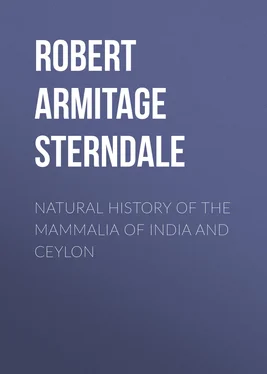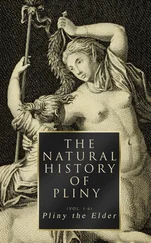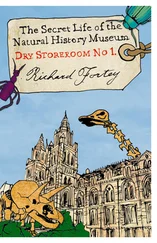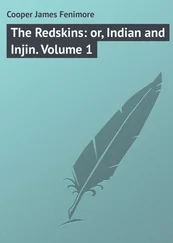Robert Armitage Sterndale - Natural History of the Mammalia of India and Ceylon
Здесь есть возможность читать онлайн «Robert Armitage Sterndale - Natural History of the Mammalia of India and Ceylon» — ознакомительный отрывок электронной книги совершенно бесплатно, а после прочтения отрывка купить полную версию. В некоторых случаях можно слушать аудио, скачать через торрент в формате fb2 и присутствует краткое содержание. Жанр: foreign_edu, Биология, на английском языке. Описание произведения, (предисловие) а так же отзывы посетителей доступны на портале библиотеки ЛибКат.
- Название:Natural History of the Mammalia of India and Ceylon
- Автор:
- Жанр:
- Год:неизвестен
- ISBN:нет данных
- Рейтинг книги:5 / 5. Голосов: 1
-
Избранное:Добавить в избранное
- Отзывы:
-
Ваша оценка:
- 100
- 1
- 2
- 3
- 4
- 5
Natural History of the Mammalia of India and Ceylon: краткое содержание, описание и аннотация
Предлагаем к чтению аннотацию, описание, краткое содержание или предисловие (зависит от того, что написал сам автор книги «Natural History of the Mammalia of India and Ceylon»). Если вы не нашли необходимую информацию о книге — напишите в комментариях, мы постараемся отыскать её.
Natural History of the Mammalia of India and Ceylon — читать онлайн ознакомительный отрывок
Ниже представлен текст книги, разбитый по страницам. Система сохранения места последней прочитанной страницы, позволяет с удобством читать онлайн бесплатно книгу «Natural History of the Mammalia of India and Ceylon», без необходимости каждый раз заново искать на чём Вы остановились. Поставьте закладку, и сможете в любой момент перейти на страницу, на которой закончили чтение.
Интервал:
Закладка:
The Ailuropus is thus an animal not strictly plantigrade, like the Bears in general, or the same as the Polar Bear, of which the feet, although placed flat on the earth, are not devoid of hair; but, on the contrary, the Ailuropus resembles the Ailurus , which is semi-plantigrade, yet hairy under Its soles.
The colouring of the Ailuropus is remarkable: it is white with the exception of the circumferences of the eyes, the ears, the shoulders, and the lower part of the neck which are entirely black. These stand out clearly on a groundwork of slightly yellowish-white; the spots round the eyes are circular, and give a strange aspect to the animal; those on the shoulders represent a sort of band placed transversely across the withers, widening as they descend downwards to lower limbs. The hinder limbs are also black from the lower part of the thigh down to the toes, but the haunches, as also the greater part of the tail, are as white as the back and belly; the colouring is the same in young and old. The fur is long, thick, and coarse, like that of the bears.
From the general form of the skull it would seem impossible to determine the family to which this animal belongs. In effect the head differs considerably from the Ursidæ and the Mustelidæ , and presents certain resemblances to that of the hyæna; but there are numerous and important particulars which indicate a special zoological type, and it is only by an inspection of the dental system that the natural affinities of the Ailuropus can be determined.
In the upper jaw the incisors are, as usual, in three pairs. They are remarkable for their oblique direction; the centre ones are small and a little widened at the base; the second pair are stronger and dilated towards the cutting edge; the external incisors are also strong and excavated outside to admit the canines of the lower jaw. The canines are stout, but short, with a well-marked blunt ridge down the posterior side, as in the Malayan bears.
The molars are six in number on each side, of which four are premolars, and two true molars. The first premolar, situated behind, a little within the line of the canine, is very small, tuberculiform, and a little compressed laterally. The second is strong and essentially carnassial; it is compressed laterally and obliquely placed. It is furnished with three lobes: the first lobe is short, thick, and obtuse; the second is raised, triangular and with cutting edges; the third of the size of the first, but more compressed—in short, a double-fanged tooth. This molar differs considerably from the corresponding tooth of the bear by its form and relative development, since in that family it is one-fanged, very low and obtuse. On the contrary, it approaches to that of the hyænas and felines. With the panda ( Ailurus fulgens ) the corresponding premolar is equally large, double-fanged and trenchant, but the division in lobes is not so marked.
The third or penultimate molar of the Ailuropus is larger and thicker than the preceding, divided in five distinct lobes—three outer ones in a line, and two less projecting ones within.
The last premolar is remarkably large; it is much larger behind than in front, and its crown is divided into six lobes, of which five are very strong; the three external ones are much developed and trenchant, the centre one being the highest and of a triangular shape. Of the internal lobes, the first one is almost as large as the external ones; the second is very small, almost hidden in the groove between the last mentioned; and the third, which is very large, rounded and placed obliquely inwards in front, and outwards behind. Professor Milne-Edwards remarks that he knows not amongst the carnivora a similar example of a tooth so disposed. That of Ailurus shows the least difference, that is to say it is nearest in structure, having also six lobes, but more thick-set or depressed.
The true molars are remarkable for their enormous development: the first is almost square, with blunt rounded cusps, four-fanged, and presenting a strange mixture of characteristics, in its outward portion resembling an essentially carnivorous type, and its internal portion that of molars intended to triturate vegetable substances. Amongst bears, and especially the Malayan bears, this character is presented, but in a less striking degree; the panda resembles it more, with certain restrictions, but the most striking analogy is with the genus Hyænarctos .
The last molar is peculiar in shape, longer than broad, and is tuberculous, as in the bears, but it differs in this respect from the pandas, in which the last molar is almost a repetition of the preceding one, and its longitudinal diameter is less than its transverse.
In the lower jaw the first premolar, instead of being small and tuberculate, as its corresponding tooth in the upper jaw, is large, double-fanged, trenchant and tri-lobed, resembling, except for size, the two following ones. The second is not inserted obliquely like its correspondent in the upper jaw, its axis is in a line with that of its neighbours; tricuspidate, the middle lobe being the highest. The third premolar is very large, and agrees with its upper one, excepting the lobule on the inner border.
The first true molar is longer than broad, and wider in front; the crown, with five conical tubercles in two groups, separated by a transverse groove; the next molar is thicker and stouter than the preceding one, and the last is smaller, and both much resemble those of the bears, and differ notably from the pandas.
From what M. Milne-Edwards describes, we may briefly epitomise that the premolarial dentition of the Ailuropus is ailuroid or feline, and that the true molars are arctoid or ursine.
The skull is remarkable for the elongation of the cranium and the elevation of the occipital crest, for the shortness of the muzzle, for the depression of the post-frontal portion, and for the enormous development of the zygomatic arches. In another part M. Milne-Edwards remarks that there is no carnivorous animal of which the zygomatic arches are so developed as in the Ailuropus . He states that it inhabits the most inaccessible mountains of Eastern Thibet, and it never descends from its retreats to ravage the fields, as do the Black Bears; therefore it is difficult to obtain. It lives principally on roots, bamboos and other vegetables; but we may reasonably suppose from its conformation that it is carnivorous at times, when opportunity offers, as are some of the bears, and as is the Ailurus . I have dwelt at some length on this animal, though not a denizen of India proper; but it will be a prize to any of our border sportsmen who come across it on the confines of Thibet, and therefore I have deemed it worthy of space.
SIZE.—From muzzle to tail, about four feet ten inches; height about twenty-six inches.
NATIVE NAMES.— Wah , Nepal; Wah-donka , Bhot.; Sunnam or Suknam , Lepch.; Negalya , Ponya of the Nepalese ( Jerdon ). In the Zoological Gardens in London it is called the Panda , but I am unable just now to state the derivation of this name.
HABITAT.—Eastern Himalayas and Eastern Thibet.

DESCRIPTION.—"Skull ovate; forehead arched; nose short; brain case ovate, ventricose; the zygomatic arches very large, expanded; crown bent down behind" ( Gray ). The lower jaw is very massive, and the ascending ramus unusually large, extending far above the zygomatic arch, forming almost a right angle with equal arms. Hodgson's description is: "Ursine arm; feline paw; profoundly cross-hinged, yet grinding jaw, and purely triturative and almost ruminant molar of Ailurus ; tongue smooth; pupil round; feet enveloped in woolly socks with leporine completeness. It walks like the marten; climbs and fights with all the four legs at once, like the Paradoxuri , and does not employ its forefeet—like the racoon, coatis, or bears—in eating."
Читать дальшеИнтервал:
Закладка:
Похожие книги на «Natural History of the Mammalia of India and Ceylon»
Представляем Вашему вниманию похожие книги на «Natural History of the Mammalia of India and Ceylon» списком для выбора. Мы отобрали схожую по названию и смыслу литературу в надежде предоставить читателям больше вариантов отыскать новые, интересные, ещё непрочитанные произведения.
Обсуждение, отзывы о книге «Natural History of the Mammalia of India and Ceylon» и просто собственные мнения читателей. Оставьте ваши комментарии, напишите, что Вы думаете о произведении, его смысле или главных героях. Укажите что конкретно понравилось, а что нет, и почему Вы так считаете.












